Beating the Street?
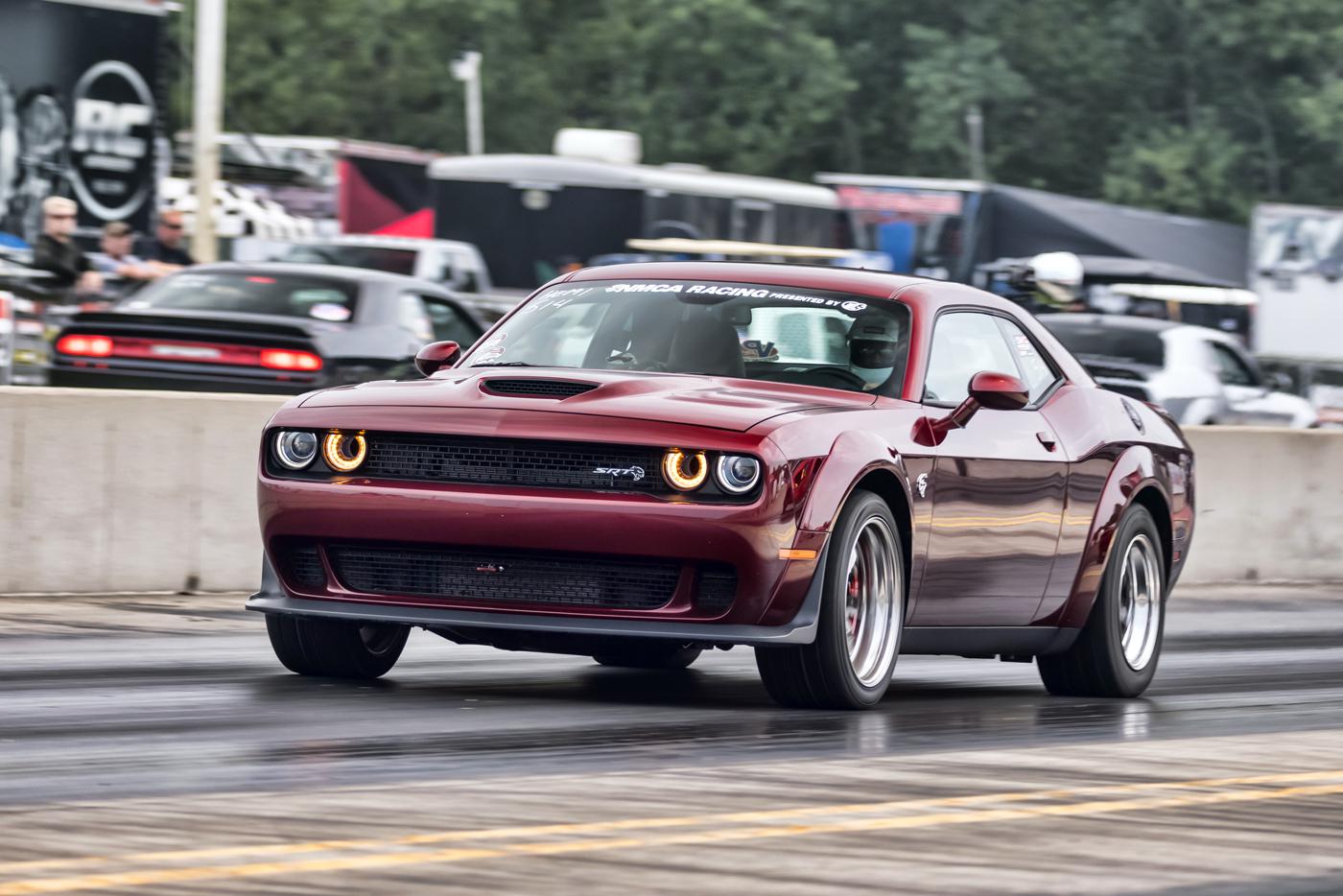
Photo courtesy of NMCA
Race tracks, sanctioning bodies, and promoters have long sought to convert street racers into legitimate track competitors. Here’s a look at some of their efforts and programs, the impact they’re having, and the challenges that remain.
After witnessing far too many tragedies as a result of street races, Sheriff Marcos Lopez of Florida’s Osceola County is determined to raise public awareness of street racing and its dangers.
He teamed with a drag strip to host a racing event that would attract attention to the cause, while offering street racers an introduction to the safer, legal world of organized racing at purpose-built tracks.
Lopez isn’t the first to organize such an event. For more than a decade, tracks, sanctioning bodies and promoters have created events and programs carefully aimed at attracting street racers and steering them toward competing on race tracks. But are these programs actually working? Can they convert street racers into dedicated track competitors over the long term? Are they making a dent in the problem of street racing?
These are tough questions that need to be asked.
To find the answers, we reached out to a variety of industry sources, including sanctioning bodies, tracks and promoters. Their insight shows not only the scope of the problem, but the multi-faceted approach it demands.
The Other Pandemic
Street racing has been steadily growing for more than a decade and has reached alarming levels. According to online insurance website Insurify, the national average of drivers who have received a street racing violation is about 6 per 100,000 drivers. Several states have even higher rates; North Dakota leads the way with 41 per 100,000 drivers.
Yet that statistic represents just the relative few who got caught. The actual number of active street racers is certainly far higher than that at any given time, making street racing a massive challenge for tracks, sanctioning bodies and promoters to attack by themselves.
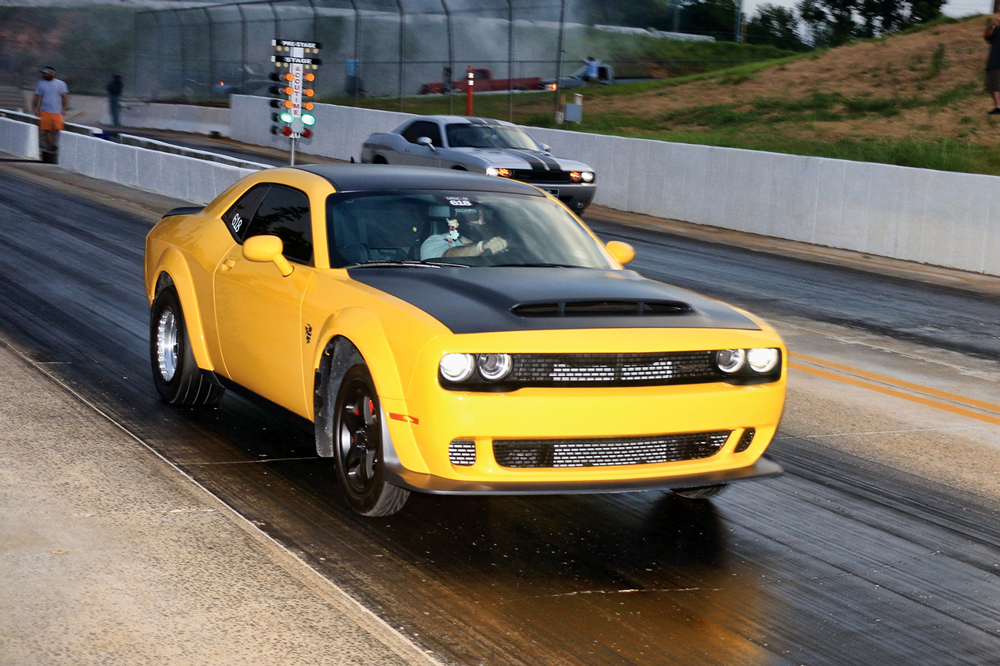
Furthermore, evidence shows that street racing activity has jumped even higher during the pandemic. With many people working from home, roads were emptier than usual, making them appealing settings for impromptu races. At the same time, social activities of all kinds were cancelled due to COVID-19, leaving many car enthusiasts with few other outlets for entertainment.
The difference is striking. According to a May 2021 Associated Press article, Dallas, Texas, police received almost twice as many calls in 2020 for street racing as they did the year before: 8,441 in 2020, up from 4,867 in 2019. The article also reported that New York City received more than 1,000 street racing complaints in six months during 2020, nearly five times as many as the same period the year before.
Besides the far-reaching effects of the pandemic, the reasons for street racing’s leap in popularity come from a variety of other factors. “To some extent, the closing of a lot of race tracks is part of the cause,” observed Lonnie Grim of NHRA, Glendora, California. “But probably a bigger factor is the general interest in hot rods. Nowadays, more than ever before, you can take a fairly late model car, and with some hand tools and a little bit of money, you can roll a 1,000-horsepower car out of your garage.”
While those factors may contribute to the problem, our sources say those effects are dwarfed by the influence of popular media, namely “The Fast and the Furious” movie franchise and the “Street Outlaws” cable TV show. “It’s all because of the TV shows,” said Chuck Sundstrom of Go Fast Entertainment, Gilbert, Arizona. “We saw that with drifting years ago with ‘Fast and Furious.’ That’s when drifting really took off and people were building those cars and drifting them on the streets. Now we’ve seen that with drag racing in the last five, six, seven years with ‘Street Outlaws.’”
Of course, it can be argued that shows like “Street Outlaws” merely depict a reality that’s already there. That may be true to some extent. But consider this: “Street Outlaws” attracts more than a million viewers per episode.
The Thing About Street Racers Is…
For years now, race tracks, sanctioning bodies and promoters have worked tirelessly to provide appealing venues for street racers, in the hopes that they’ll leave behind the dangers of street racing and convert to responsible track competitors. The trend of staging these types of organized track events for street racers actually began decades ago, before street racing reached the mammoth proportions of today.
“In 2000, our executive vice president and general manager, Chris Blair, was working as a drag strip manager at Las Vegas Motor Speedway,” recounted John Bisci of World Wide Technology Raceway, Madison, Illinois. “Las Vegas had a terrible illegal street racing problem. Chris looked at some ways to make it an event, but not feel like your aunt and uncle were watching over your shoulder. That became what we called Midnight Mayhem. We had a tremendous turnout.”
Since then, race tracks throughout the nation have jumped in with similar events. These programs vary in their specifics, but they typically feature a range of entertainment options for young street racers. Often included are drifting, DJs, light shows, and other energetic youth-oriented elements.
The common denominator between all these events is the cool factor. “If it’s too organized, it becomes a Chuck E. Cheese birthday party,” said Bisci. “It should be as underground and hip as possible.”
Along with the vital cultural and entertainment aspects of track-based street-racing events, there are some other key elements that these programs address. For one thing, street racers often avoid race tracks because they don’t know anything about the techniques, terminology and expectations of competing on a race track. It can be intimidating for the inexperienced, which can be a barrier to participation.
In response, street-racing programs at tracks usually take on an educational function, reaching out to participants in a friendly, non-intimidating manner and teaching what it takes to race successfully at an actual drag strip. “We found that a lot of these guys have never been to a drag strip,” said Rollie Miller of NMCA, Santa Ana, California. “So we need to spend extra time with them. We’ll even walk them up on the starting line and show them the stage beams, the water box and other things they need to know.”
By taking street racers under their wing and easing them into the culture of organized track competition, these events are making believers out of street racers across the country. The payoff is evident in the crowds that flock to these events, with car counts often numbering in the hundreds.
Where the Dream Ends
So with all these things going for track-based street-racing events, why is street racing thriving? Given the focus of the events, the young demographic that participates in and attends them, and the strong car counts they typically get, it’s almost beyond question that these events are introducing a significant number of street racers to organized competition. It would be almost impossible for them not to.
Yet all evidence points to the fact that street racing is more popular than ever.
The difficulty in getting to the reasons why is, in part, a problem of accurately gauging the real impact that track-based street-racing programs are having on street activity. Street racers are, after all, “outlaws.” There isn’t any official census of them. And having engaged in illegal driving activities, they’re usually somewhat wary about even showing up at an organized event that typically has security, track officials and police roaming the pits.
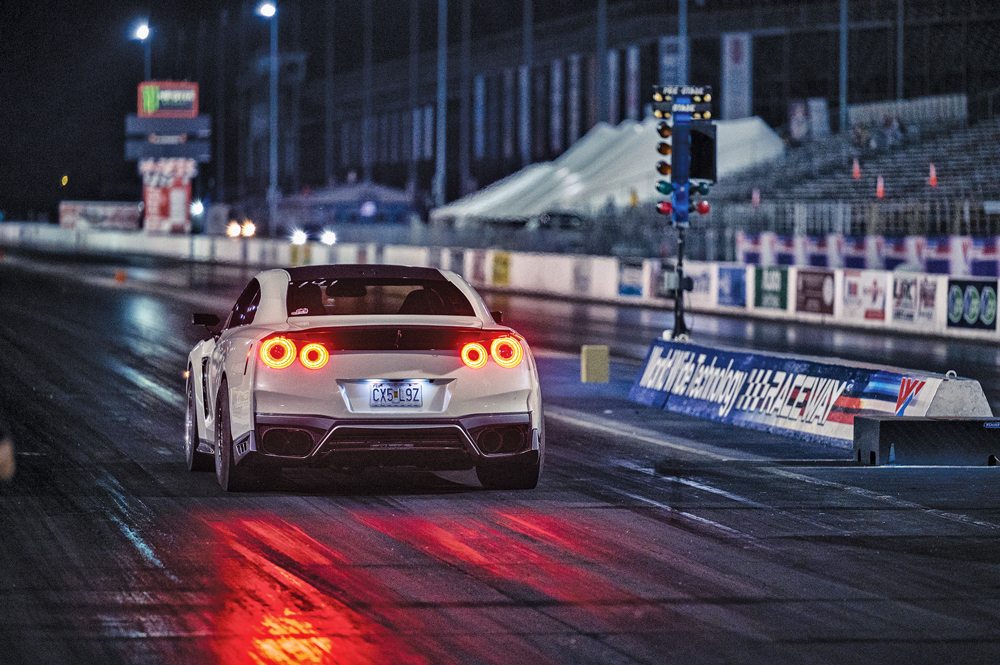
Track officials and promoters understand street racers’ intense desire for privacy, which they acknowledge and respect as one of the conditions it takes to attract this crowd. “They just show up,” said Bisci. “And then when they’re done or when they’re tired, they leave. We don’t bother them.”
Street racers’ need for anonymity essentially obliterates any chance for a headcount. And just going off of the overall car count or ticket-gate numbers wouldn’t necessarily be accurate either. There’s no way to tell which participants do or don’t actually race on the street.
Because street racers intentionally fly under the radar in that way, the only group that might be able to quantify the number and overall effect of street racing are law-enforcement agencies. But even they struggle to make an accurate count. Complaints police receive about street racing often get tagged as “miscellaneous” reports in record-keeping systems, and crashes that result from racing tend to be filed under general causes like “speeding” or “reckless driving.”
It’s safe to assume, then, that most statistics regarding street racing err significantly on the low side.
Regardless of the actual numbers, track-based street-racing programs should only be seen as one tool in the fight against street racing. They have to be part of a combined effort that includes law enforcement, media and local government, as well as the street racing community itself. “It’s all about people putting forth the effort on both sides,” said Grim. “Everybody has to invest in the idea with an open mind and find concessionary value in the fact that if we can move that activity off the street and onto the race track, it’s a win-win for everyone.”
Sadly, tracks and the street-racing events they host are often the voice in the wilderness. While some of our sources have gained solid cooperation from local law enforcement, many report that police don’t seem to care about the programs. The ones that do want to be involved are often hampered by lack of resources.
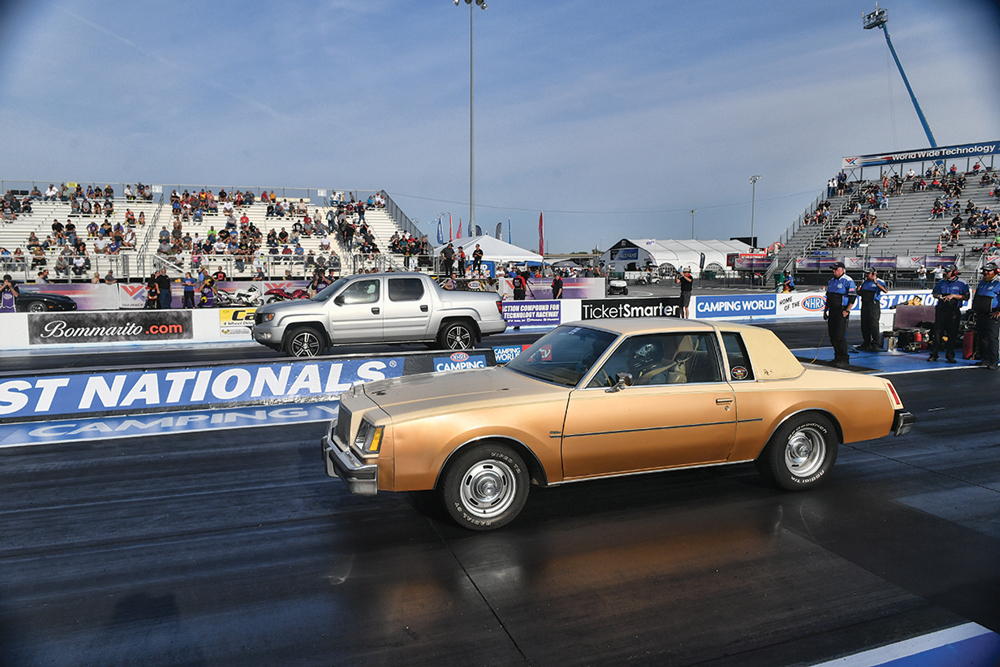
“We haven’t had much luck with local law enforcement agencies,” said Sundstrom. “I’ve tried. The Phoenix Police Department actually has a street racing enforcement group now. We talked about our different programs, but they told me right up front, ‘We’d love to do something with you, but we don’t have the time or the ability.’”
Ozzy Moya of South Georgia Motorsports Park in Adel, Georgia, echoed that sentiment. “Honestly, it’s hard getting Sheriff’s departments to cooperate. Some of them just don’t want to be any part of it.”
Instead, municipalities and law-enforcement agencies tend to place their hopes for combatting street racing on increased legislation and more aggressive enforcement. To that end, a significant number of major US cities have recently passed tougher street racing laws, while police departments are stepping up patrols aimed at potential street racing activity.
Such measures could be effective components in the effort to control street racing. However, there seems to be little if any thought given to where those street racers should go when their clandestine activities are shut down.
Some of our sources report a similar apathy from local news media. News outlets often express little or no interest in these events, except occasionally as a brief tag at the end of a tragic street racing incident they report on. “Although street racing is a big deal in Phoenix, l think there are just too many other things to cover at the same time,” observed Sundstrom. “So it gets put on a back burner until somebody gets hurt, unfortunately.”
Without this combined effort, tracks, sanctioning bodies and promoters face an impossible task. They don’t patrol the streets, they aren’t the parents of these racers and they don’t enforce the law.
All they can really do is offer a safer, legal venue for street racers.
The Sunny Side of the Track
Despite these challenges and setbacks, the sources we spoke to are optimistic about their efforts and believe strongly in their potential to make a difference. “In the last four weeks, we’ve probably seen 300 to 400 new street racers at our events,” Moya reported in October. “I believe that once these guys do it, they’ll get hooked on it. They realize they can do it at a race track without getting a ticket and going to jail or causing harm to somebody else. It’s been very positive.”
Sundstrom has also seen solid evidence of success with his programs, including the NHRA licensing program he runs in conjunction with his track-based street-racing events. “We’ve gotten 43 drivers their NHRA licenses. Out of those 43 there were only three or four that were actual drag racers. These are people that go and goof around and have fast cars and stuff, and they just come to the program because it looks cool.”
Even though many of these programs struggle to get mainstream-media attention, like so many other aspects of youth culture nowadays, word of mouth amplified by social media is ultimately as powerful, if not more. “If we get 20 people in the first race, they go tell all their friends at the next race and more people come out,” said Sundstrom.
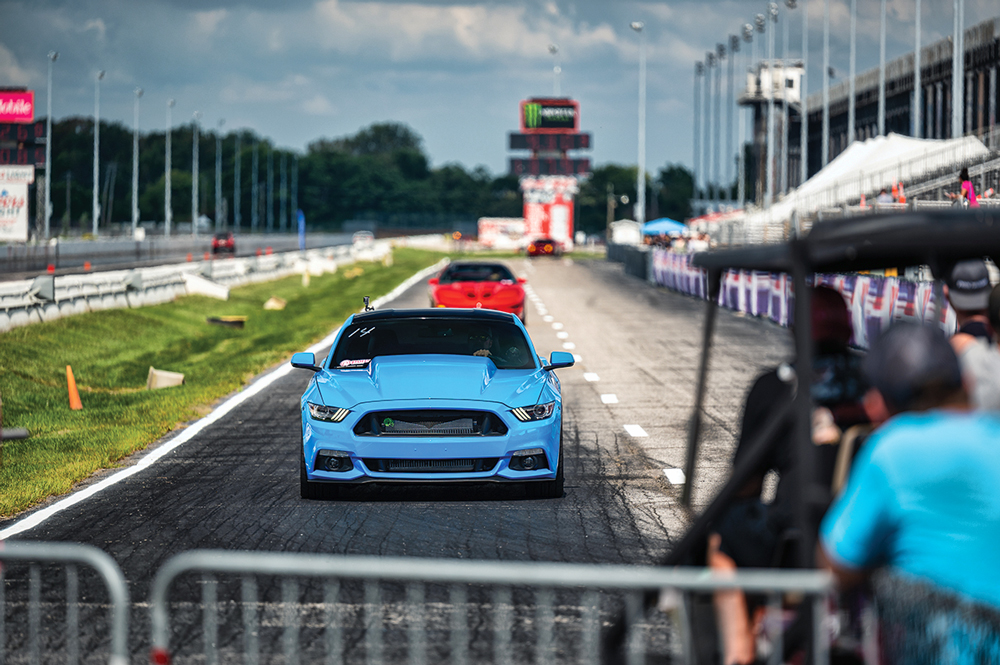
As for Sheriff Lopez’s efforts in Florida, he’s demonstrating that law enforcement can be part of the solution, and that doing so can have profound effects. He helped organize the Take it to the Track program, which centered around four weeks of drag racing at Orlando Speed World in October 2021. The program attracted 200 racers from the area, bringing widespread exposure to the dangers that street racing poses.
Equally important, the event sent a message to other law-enforcement agencies that this is a cause that needs attention. “I love the buy-in from the other agencies, it feels like we got what we wanted out of it,” Lopez told the Osceola News Gazette. “We’ve highlighted the awareness of illegal racing.”
Moya, who helped organize the Take it to the Track program, offered a similar take on the event, and noted the media interest that the prominent sheriff was able to attract as well. “Once you get one sheriff on board, it seems like all the other ones jump on, too. And Sheriff Lopez got every news station out there, including the Spanish-language ones.”
Granted, translating this kind of energy into something compelling enough to lure racers off streets and onto tracks is still a tall order. The carefully contrived fantasy of street racing that “Street Outlaws” and “The Fast and the Furious” movie franchise portray have all the potent drama and scintillating thrills that the best TV and movie producers can pack into them.
It’s tough to compete with that, especially with a reality full of “uncool” things like ambulances, guard rails, officials and police officers all in plain sight.
No matter what, there will always be a significant number of street racers that even the best track programs can’t convert. “Some street racers are in it for the thrill of doing something illegal,” said Bisci. “When you’re a young person, that’s a big draw, like leaving your parents’ house and lighting up a smoke, or going behind the garage and drinking beer, or something like that. It’s just the thrill of doing something illegal.
“We’ll never completely erase the problem,” he admitted. “But we offer a safe alternative.”
Helping Turn a Corner in the Fight Against Street Racing
An Idaho-based organization has formed one of the first-ever mobile drag racing venues in the state. M.M.A.S.V. Racing (pronounced Massive Racing) was founded by Hayden Horne and Tom Tillotson following the closure of Snake River Dragway in Gooding, Idaho, in 2019.
“That track had been there for decades, so there was a huge group of people that didn’t have anywhere to race. These are the out-of-their-back-pocket weekend warriors, so they couldn’t travel,” Horne said.
Another goal of the organization was to help cut down on illegal street racing in the area. “We also have a huge street racing problem here, so we figured we could kill two birds with one stone,” he continued. “Law enforcement are all for it. They back us 100% since they don’t want to see drag racing accidents. They’ve said they notice a decline in street racing on the nights we meet.”
With support from county officials and local law enforcement, the group builds and tears down a 1/8-mile circuit near the Hub Butte Landfill in Twin Falls County. They use basic drag strip equipment, including a tree, staging beams, MPH radar systems, a finish line, and a computer and printer. “We also have a volunteer EMT-trained firefighter with a truck and first responder equipment on-hand, with ATVs for quick response,” Horne said. “We’re fully insured; it’s legally sanctioned racing.”
“We set up a school bus with music. The atmosphere is just having fun. There are serious drivers with a competitive nature, of course, but it’s like a huge family,” Horne added.
Required car and driver safety equipment include an approved helmet, a race jacket (or long shirt), long pants, closed-toed shoes, safety harness (or seat belt), mounted batteries, and two throttle return springs.
Events feature bracket, grudge, or heads-up categories—depending on what racers demand that day. “You can’t go to a track and ask what class to run, but we get to pick and choose,” Horne said, adding they’ve seen up to 80 cars and 200 spectators in a day. “I have a 1969 Nova that I race for fun, and everyone wants to grudge match it.”
Looking ahead, the group is planning to purchase a scoreboard and is working with county officials to secure another road “with a better track surface,” Horne said. “That’s the thing with a mobile strip: we can go anywhere as long as we have permission.”
The efforts mirror a similar initiative in San Antonio, Texas, where local police have teamed up with Alamo City Motorplex to combat dangerous street racing. With the idea of working from the inside, police officers had conversations with illegal racers, convincing them to compete in a controlled environment, i.e., Alamo City Motorplex.
Those that mention the San Antonio Police Department (SAPD) collaboration at the gate receive a discounted ticket and entry fee. The required driver safety gear is a helmet, pants, and closed-toed shoes.
“PRI applauds the efforts of the SAPD and Alamo City Motorplex. Collaborations like these make a serious impact on the local communities’ safety,” said PRI Vice President of Government and Legal Affairs Daniel Ingber.
The campaign comes after Texas passed laws to help cut back on illegal street racing, including raising the offense to a Class A misdemeanor. Authorities will also now be able to impound vehicles and punish donuts and burnouts made on public spaces.
“It’s vital racers follow local laws not only to protect themselves but also those around them,” Ingber said. —Laura Pitts
SOURCES
–
Go Fast Entertainment
facebook.com/GoFastEntertainment
M.M.A.S.V. Racing
NHRA
nhra.com
NMCA
nmcadigital.com
South Georgia Motorsports Park
goracesgmp.com
World Wide Technology Raceway
wwtraceway.com
 MEMBERSHIP LOGIN
MEMBERSHIP LOGIN JOIN PRI
JOIN PRI


